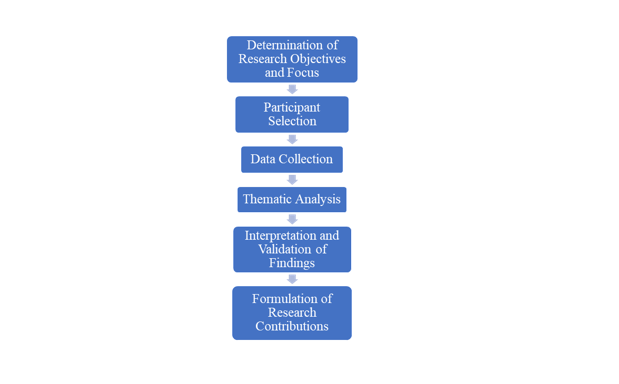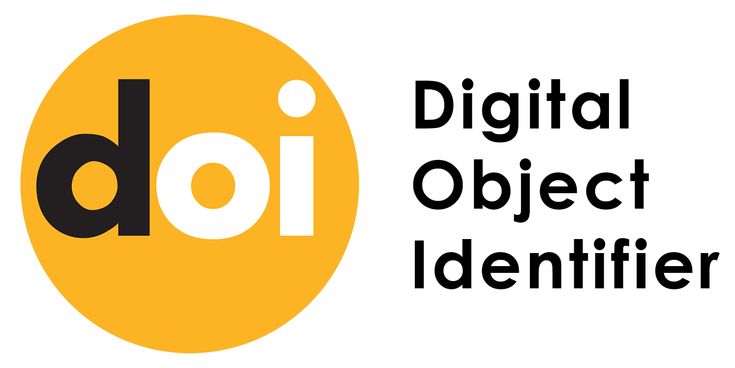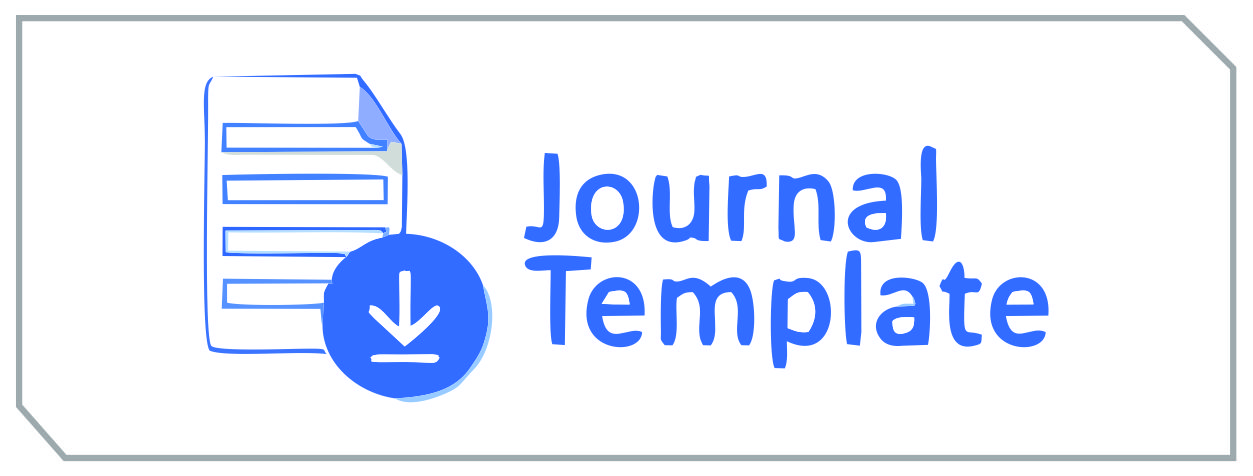The Evolving Field of Graphic Design: Challenges and Opportunities in the Integration of Artificial Intelligence
DOI:
https://doi.org/10.51903/ijgd.v3i1.2537Keywords:
Integration of AI, Artistic Identity, Digital Aesthetics, Graphic Designers from Indonesia, Phenomenological ResearchAbstract
The integration of Artificial Intelligence (AI) has significantly transformed the landscape of graphic design, shifting the designer’s role from sole creator to visual curator and co-creator. While AI tools such as Midjourney and Adobe Firefly offer speed and efficiency in ideation and iteration, they also raise critical concerns regarding authorship, originality, and the redefinition of creative identity. This research seeks to investigate how professional Indonesian graphic designers view and adjust to the incorporation of AI in their creative processes. Using an interpretative phenomenological method, this study explores the lived experiences of ten designers from diverse professional backgrounds who actively integrate AI into their design practices. Data was gathered via semi-structured interviews and analyzed thematically using the Interpretative Phenomenological Analysis (IPA) approach. The results indicate five main aspects: changing job roles, conflicts between creativity and automation, adaptive learning approaches, ethical and professional challenges, and chances for improved design efficiency. Participants recognized that although AI enhances the creative process, it frequently tests their feeling of artistic control and prompts inquiries regarding the legitimacy of outcomes produced with AI assistance. Additionally, ethical issues like plagiarism and uncertainties around copyright surfaced as major concerns. This research adds to the discussion on digital design by emphasizing local perspectives in a worldwide technological transformation, illustrating how cultural and professional values influence the adaptation process. The findings provide important insights for educators, practitioners, and policymakers who seek to promote ethical, culturally aware, and critically reflective AI implementation in the creative sectors.
References
Anantrasirichai, N., & Bull, D. (2021). Artificial intelligence in the creative industries: a review. Artificial Intelligence Review 2021 55:1, 55(1), 589–656. https://doi.org/10.1007/S10462-021-10039-7
Bedir Erişti, S. D., & Freedman, K. (2024). Integrating Digital Technologies and AI in Art Education: Pedagogical Competencies and the Evolution of Digital Visual Culture. Participatory Educational Research, 11(H. Ferhan Odabaşı Gift Issue), 57–79. https://doi.org/10.17275/PER.24.94.11.6
Bellaiche, L., Shahi, R., Turpin, M. H., Ragnhildstveit, A., Sprockett, S., Barr, N., Christensen, A., & Seli, P. (2023). Humans versus AI: whether and why we prefer human-created compared to AI-created artwork. Cognitive Research: Principles and Implications, 8(1), 1–22. https://doi.org/10.1186/S41235-023-00499-6/TABLES/4
Caroline Wibowo, M., & Raharjo, B. (2023). Emotional Identification Using Autoethnography. IJGD: International Journal of Graphic Design, 1(2).
Charina, A., Kurnia, G., Mulyana, A., & Mizuno, K. (2022). The Impacts of Traditional Culture on Small Industries Longevity and Sustainability: A Case on Sundanese in Indonesia. Sustainability 2022, Vol. 14, Page 14445, 14(21), 14445. https://doi.org/10.3390/SU142114445
Chatterjee, A. (2022). Art in an age of artificial intelligence. Frontiers in Psychology, 13, 1024449. https://doi.org/10.3389/FPSYG.2022.1024449/BIBTEX
Chesterman, S. (2020). ARTIFICIAL INTELLIGENCE AND THE LIMITS OF LEGAL PERSONALITY. International & Comparative Law Quarterly, 69(4), 819–844. https://doi.org/10.1017/S0020589320000366
Fadilurrahman, M., Kurniawan, T., Ramadhani, Misnasanti, & Shaddiq, S. (2021). Systematic Literature Review of Disruption Era in Indonesia: The Resistance of Industrial Revolution 4.0. Journal of Robotics and Control (JRC), 2(1), 51–59. https://doi.org/10.18196/JRC.2152
Garcia, M. B. (2024). The Paradox of Artificial Creativity: Challenges and Opportunities of Generative AI Artistry. Creativity Research Journal. https://doi.org/10.1080/10400419.2024.2354622
Gu, Y., Wang, Q., & Gu, W. (2023). The Innovative Application of Visual Communication Design in Modern Art Design. Electronics 2023, Vol. 12, Page 1150, 12(5), 1150. https://doi.org/10.3390/ELECTRONICS12051150
Heng, S., Tsilionis, K., Scharff, C., & Wautelet, Y. (2022). Understanding AI ecosystems in the Global South: The cases of Senegal and Cambodia. International Journal of Information Management, 64, 102454. https://doi.org/10.1016/J.IJINFOMGT.2021.102454
Holzinger, A., Saranti, A., Angerschmid, A., Retzlaff, C. O., Gronauer, A., Pejakovic, V., Medel-Jimenez, F., Krexner, T., Gollob, C., & Stampfer, K. (2022). Digital Transformation in Smart Farm and Forest Operations Needs Human-Centered AI: Challenges and Future Directions. Sensors 2022, Vol. 22, Page 3043, 22(8), 3043. https://doi.org/10.3390/S22083043
Huang, L., & Zheng, P. (2023). Human-Computer Collaborative Visual Design Creation Assisted by Artificial Intelligence. ACM Transactions on Asian and Low-Resource Language Information Processing, 22(9). https://doi.org/10.1145/3554735
Jeon, J., Geetha, S., Kang, D., & Narayanamoorthy, S. (2022). Extended TAM model to explore the factors that affect intention to use AI robotic architects for architectural design. Technology Analysis & Strategic Management, 34(3), 349–362. https://doi.org/10.1080/09537325.2021.1900808
Kim, I., Ki, C. W., Lee, H., & Kim, Y. K. (2024). Virtual influencer marketing: Evaluating the influence of virtual influencers’ form realism and behavioral realism on consumer ambivalence and marketing performance. Journal of Business Research, 176, 114611. https://doi.org/10.1016/J.JBUSRES.2024.114611
Kitsios, F., & Kamariotou, M. (2021). Artificial Intelligence and Business Strategy towards Digital Transformation: A Research Agenda. Sustainability 2021, Vol. 13, Page 2025, 13(4), 2025. https://doi.org/10.3390/SU13042025
Kochański, Ł., & Borkowski, A. S. (2024). Automating the conceptual design of residental areas using visual and generative programming. Journal of Engineering Design, 35(2), 195–216. https://doi.org/10.1080/09544828.2024.2303282
Leone, D., Schiavone, F., Appio, F. P., & Chiao, B. (2021). How does artificial intelligence enable and enhance value co-creation in industrial markets? An exploratory case study in the healthcare ecosystem. Journal of Business Research, 129, 849–859. https://doi.org/10.1016/J.JBUSRES.2020.11.008
Magistretti, S., Pham, C. T. A., & Dell’Era, C. (2021). Enlightening the dynamic capabilities of design thinking in fostering digital transformation. Industrial Marketing Management, 97, 59–70. https://doi.org/10.1016/J.INDMARMAN.2021.06.014
Mannuru, N. R., Shahriar, S., Teel, Z. A., Wang, T., Lund, B. D., Tijani, S., Pohboon, C. O., Agbaji, D., Alhassan, J., Galley, J. Kl., Kousari, R., Ogbadu-Oladapo, L., Saurav, S. K., Srivastava, A., Tummuru, S. P., Uppala, S., & Vaidya, P. (2023). Artificial intelligence in developing countries: The impact of generative artificial intelligence (AI) technologies for development. Information Development. https://doi.org/10.1177/02666669231200628
Montenegro, N. (2024). Integrative analysis of Text-to-Image AI systems in architectural design education: pedagogical innovations and creative design implications. Journal of Architecture and Urbanism, 48(2), 109-124–109–124. https://doi.org/10.3846/JAU.2024.20870
Munandar, M. I., & Newton, J. (2021). Indonesian EFL teachers’ pedagogic beliefs and classroom practices regarding culture and interculturality. Language and Intercultural Communication, 21(2), 158–173. https://doi.org/10.1080/14708477.2020.1867155
Nizza, I. E., Farr, J., & Smith, J. A. (2021). Achieving excellence in interpretative phenomenological analysis (IPA): Four markers of high quality. Qualitative Research in Psychology, 18(3), 369–386. https://doi.org/10.1080/14780887.2020.1854404
Nurmana, A. H. B., Wibowo, M. C., & Nugroho, S. (2024). Enhancing Image Denoising Efficiency: Dynamic Transformations in BM3D Algorithm. Journal of Image and Graphics (United Kingdom), 12(4), 332–344. https://doi.org/10.18178/joig.12.4.332-344
Rantanen, J. (2024). AI-enhanced web development. http://www.theseus.fi/handle/10024/866184
Rezwana, J., & Maher, M. Lou. (2023). Designing Creative AI Partners with COFI: A Framework for Modeling Interaction in Human-AI Co-Creative Systems. ACM Transactions on Computer-Human Interaction, 30(5). https://doi.org/10.1145/3519026
Rodriguez, N. M., Burleson, G., Linnes, J. C., & Sienko, K. H. (2023). Thinking beyond the Device: An Overview of Human-and Equity-Centered Approaches for Health Technology Design. Annual Review of Biomedical Engineering, 25(Volume 25, 2023), 257–280. https://doi.org/10.1146/ANNUREV-BIOENG-081922-024834/CITE/REFWORKS
Selenko, E., Bankins, S., Shoss, M., Warburton, J., & Restubog, S. L. D. (2022). Artificial Intelligence and the Future of Work: A Functional-Identity Perspective. Current Directions in Psychological Science, 31(3), 272–279. https://doi.org/10.1177/09637214221091823/ASSET/D0CA5961-3BCD-4C2A-9F84-B34964C9B119/ASSETS/IMAGES/LARGE/10.1177_09637214221091823-FIG1.JPG
Shepherd, D. A., & Majchrzak, A. (2022). Machines augmenting entrepreneurs: Opportunities (and threats) at the Nexus of artificial intelligence and entrepreneurship. Journal of Business Venturing, 37(4), 106227. https://doi.org/10.1016/J.JBUSVENT.2022.106227
Shi, Y., Gao, T., Jiao, X., & Cao, N. (2023). Understanding Design Collaboration Between Designers and Artificial Intelligence: A Systematic Literature Review. Proceedings of the ACM on Human-Computer Interaction, 7(CSCW2). https://doi.org/10.1145/3610217
Sneha, V., & Kavitha, R. (2024). Exploring the economy of creativity and culture in the light of Industry 5.0: a systematic literature review of the setup of creative industries. Journal of Strategy and Management, ahead-of-print(ahead-of-print). https://doi.org/10.1108/JSMA-05-2023-0095/FULL/XML
Strich, F., Mayer, A. S., & Fiedler, M. (2021). What Do I Do in a World of Artificial Intelligence? Investigating the Impact of Substitutive Decision-Making AI Systems on Employees’ Professional Role Identity. Journal of the Association for Information Systems, 22(2), 9. https://doi.org/10.17705/1jais.00663
Utami, L. A., Lechner, A. M., Permanasari, E., Purwandaru, P., & Ardianto, D. T. (2022). Participatory Learning and Co-Design for Sustainable Rural Living, Supporting the Revival of Indigenous Values and Community Resiliency in Sabrang Village, Indonesia. Land 2022, Vol. 11, Page 1597, 11(9), 1597. https://doi.org/10.3390/LAND11091597
Vahdat, A., Alizadeh, A., Quach, S., & Hamelin, N. (2021). Would you like to shop via mobile app technology? The technology acceptance model, social factors and purchase intention. Australasian Marketing Journal, 29(2), 187–197. https://doi.org/10.1016/J.AUSMJ.2020.01.002
Verganti, R., Vendraminelli, L., & Iansiti, M. (2020). Innovation and Design in the Age of Artificial Intelligence. Journal of Product Innovation Management, 37(3), 212–227. https://doi.org/10.1111/JPIM.12523
Wang, J. Z., Zhao, S., Wu, C., Adams, R. B., Newman, M. G., Shafir, T., & Tsachor, R. (2023). Unlocking the Emotional World of Visual Media: An Overview of the Science, Research, and Impact of Understanding Emotion. Proceedings of the IEEE, 111(10), 1236–1286. https://doi.org/10.1109/JPROC.2023.3273517
Weber-Lewerenz, B. (2021). Corporate digital responsibility (CDR) in construction engineering—ethical guidelines for the application of digital transformation and artificial intelligence (AI) in user practice. SN Applied Sciences, 3(10), 1–25. https://doi.org/10.1007/S42452-021-04776-1/TABLES/4
Wibowo, M. C., Purnomo, H. D., Hartomo, K. D., & Sembiring, I. (2024). Aesthetic Photography Analysis on Instagram: A Visual Study of Social Media using ATLAS.ti. Scientific Journal of Informatics, 11(4), 1057–1072. https://doi.org/10.15294/SJI.V11I4.13985
Wiethof, C., & Bittner E. A. C. (2021). Hybrid Intelligence-Combining the Human in the Loop with the Computer in the Loop: A Systematic Literature Review.
Wingström, R., Hautala, J., & Lundman, R. (2024). Redefining Creativity in the Era of AI? Perspectives of Computer Scientists and New Media Artists. Creativity Research Journal, 36(2), 177–193. https://doi.org/10.1080/10400419.2022.2107850
Wu, Z., Ji, D., Yu, K., Zeng, X., Wu, D., & Shidujaman, M. (2021). AI Creativity and the Human-AI Co-creation Model. Lecture Notes in Computer Science (Including Subseries Lecture Notes in Artificial Intelligence and Lecture Notes in Bioinformatics), 12762 LNCS, 171–190. https://doi.org/10.1007/978-3-030-78462-1_13
Yang, E. K., & Lee, J. H. (2020). Cognitive impact of virtual reality sketching on designers’ concept generation. Digital Creativity, 31(2), 82–97. https://doi.org/10.1080/14626268.2020.1726964

Downloads
Published
Issue
Section
License
Copyright (c) 2025 International Journal of Graphic Design

This work is licensed under a Creative Commons Attribution-ShareAlike 4.0 International License.
This work is licensed under a Creative Commons Attribution-ShareAlike 4.0 International License (CC BY-SA 4.0).
This license allows others to copy, distribute, display, and perform the work, and derivative works based upon it, for both commercial and non-commercial purposes, as long as they credit the original author(s) and license their new creations under identical terms.
Licensed under CC BY-SA 4.0: https://creativecommons.org/licenses/by-sa/4.0/











5.png)

